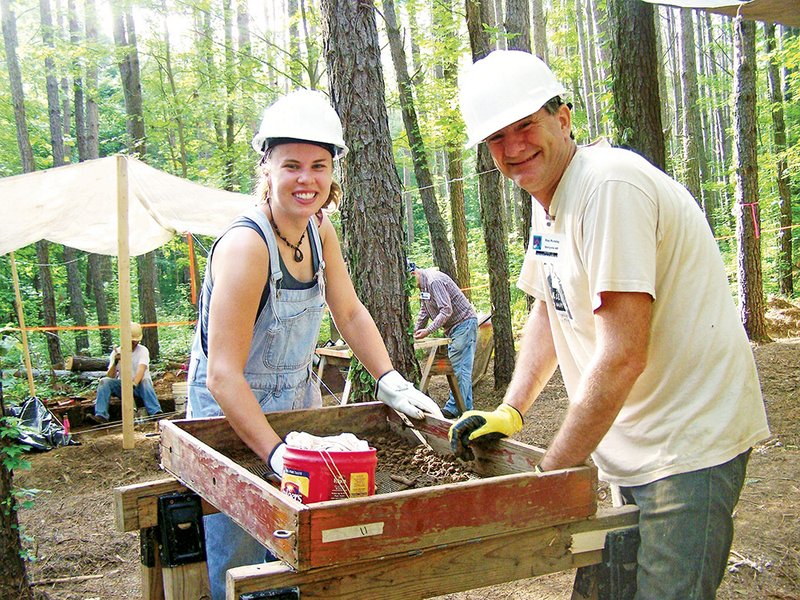Contributing to the public’s understanding of archaeology and its relevance today is one purpose of an annual training program hosted by the Arkansas Archaeological Society.
Mary Beth Trubitt, research station archaeologist at Henderson State University, said this year’s two-week program was held in Oden. The U.S. Department of Agriculture’s Forest Service and the Oden schools provided facilities for the program, which instructed as many as 75 “citizen scientists” in field and laboratory work.
She said Montgomery County — once home to the Caddo Indians — was selected for this year’s program because of its archaeological significance. Trubitt, a member of the Arkansas Archaeological Survey, helped teach participants how to excavate for stone tools and housing materials at a site in the Ouachita National Forest.
“We’re celebrating 50 years of the program,” Trubitt said. “The survey is part of the University of Arkansas System and is the professional branch of research archaeologists working for the state. The society is made up of people who are interested in archaeology, Indians and history, and want to get involved.”
Since 1964, the program has helped amateur archaeologists “learn about what is involved with research as opposed to picking up artifacts or collecting things,” Trubitt said. “We’re interested in what artifacts can tell us about how people have lived in the past. The focus is on research and preservation. It’s clear that archaeological sites are a finite cultural resource. Once they are gone, they’re gone. We try to make people aware that history is important.”
She said the survey is “here to research the state’s archaeological heritage and communicate those results to the public. I tell people, ‘I’m your local archaeologist. I’m here if you want to learn about history or if you have artifacts in your yard or a site in your area, and you’re interested in it or concerned about preserving it.’”
The program aims to help people “think about how to balance current needs with the importance of preserving the past,” Trubitt said. “Regular folks can help further science by their participation. We have people out there from 8 to 80 working in the field or in the lab, or taking classes on basic techniques.”
She said trained amateurs can assist professionals in the field.
“They are learning the right way to document and why it’s important to do so. I might get a small window of time in which to excavate a site before the land is leveled. I can call these members to help me salvage information about the site before it’s destroyed.”
Sites are vulnerable to nature, farming and property development.
“They get washed away or are damaged by land-leveling,” Trubitt said. “Some we know were flooded when the dams were created. Decades of farming — scraping the top off the land — and construction have taken out sites.”
Amateurs training in Oden were shown correct archaeological techniques, as well as what to look for at a site.
“For many people, there is the excitement of uncovering something that hasn’t seen the light of day in 2,000 years,” Trubitt said. “It’s touching the past that is really neat.”
She said the new excavation site on the Ouachita River is “one where we have a longtime range of human habitation. People have been there probably for the last 6,000 to 8,000 years. What little we knew about the site indicated there were good preservation conditions for bone and plant material. We could learn about what people were eating at the different time periods.”
The site has yielded useful information, she said.
“We are finding debris, chips from flaking stone tools, pottery pieces. We’re dealing with the refuse of human occupation. We are also collecting soil samples so that we can recover charred seeds and nutshell fragments to identify plants used for construction and food. We also want to recover animal bones or mussel shells or fish scales.”
She said timber in the area will be harvested within the next five years.
“We’re hoping to get some information about the site and its significance before it is damaged. If the Forest Service knows what sites are where, they can make decisions about which areas are important to protect.”
Trubitt said insights into the way people lived thousands of years ago are useful today.
“I think it gives you a sense of the world beyond your everyday experience. I’m the current resident, but there’s a whole line of people behind me who enjoyed the same view.”
